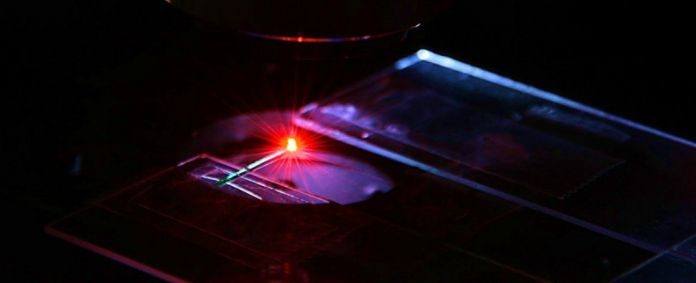Nowadays, Scientists using organic materials for various novel innovations. For example, previously researchers used Jellyfish’s fluorescent proteins to create a laser. Now, researchers from the University of Michigan produces laser from human blood. They used human blood and a fluorescent dye called indocyanine green (ICG). According to researchers, this could help doctors to find tumors in the body.
A light source, an amplifying material, and a reflective cavity were used to create this laser. Scientists then mixed ICG with blood to mimics as an amplifier. Without blood, ICG does not work. Because ICG accumulates in blood vessels, vast areas of blood vessels, like tumors, should light up like a Christmas tree.
Whenever the medium destroys through light or electricity, it causes optimization of atoms to an excited state.
Jennifer Ouellette said, “Then photons got excited inside the reflective cavity. If one strikes an excited atom, that atom will drop back down to its ground state, releasing a second photon of the same frequency and direction.”
Ultimately, these continuous striking of other activated atoms releases more protons until they create a burst of laser light.
Scientists placed blood and ICG in a reflective cylinder and shot at with a near-infrared light beam. Thus, blood emits light by creating a potential new technique for doctors to use it for searching for tumors.
After injecting ICG into patients blood, light beam shines on the skin while detecting an infrared camera for the glow.
Although, scientists will test this blood laser on the live animal tissue. Because they need to find out the response of the reflective cavity.
Xudong Fan, said, “gold nanoparticles could be useful for this job.”
“Still, we are trying to do it in the human body. But, we need to discover how to ensure that the light produced by the blood laser isn’t too high. For that purpose, you don’t need to burn the tissue,” he explained.
